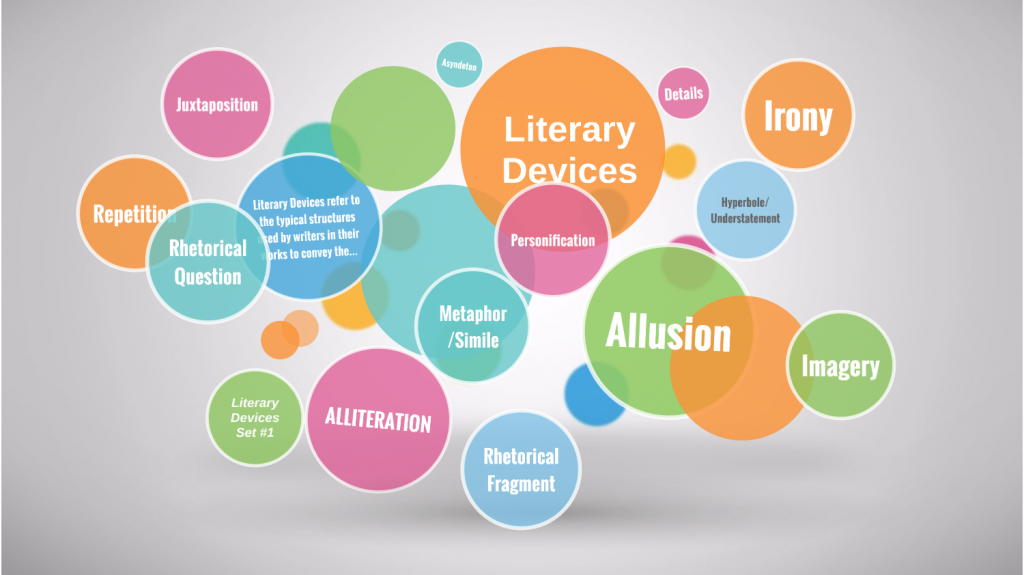Unleash the Creative Potential in Essay
Hudson Miles (hudsonmiles)
on
June 5, 2023
Add a comment about this article!
Beyond the
Obvious: Unleashing the Creative Potential of
Hyperbole, Imagery, and Metaphor in
Essays
�
Introduction
In the realm of writing, the effective use
of literary devices can transform an ordinary
essay into a captivating piece of art.
Among the plethora of tools available to
writers, hyperbole, imagery, and
metaphor stand out for their ability to evoke
emotions, engage the reader's senses, and
convey complex ideas.
�

�
This article explores the power and
creative potential of these literary devices,
providing insights and examples to inspire
writers to employ them in their essays.
Whether you're a student seeking to
enhance your academic writing or someone
looking to refine your skills, this article
will unlock the door to a world of expressive
possibilities.
�
Unleashing the Magic of Hyperbole
Hyperbole is a figure of
speech that involves exaggerated statements
or claims not meant to be taken literally.
Its purpose is to create emphasis, evoke
strong emotions, or add a touch of humor to a
piece of writing.
By stretching the truth to its limits,
hyperbole amplifies the impact of the message
being conveyed. It allows writers to make
their essays more memorable and engaging.
One classic example of hyperbole is "I've
told you a million times!" While the literal
meaning suggests an impossibly high number,
the intention is to convey frustration or
exasperation.
By employing hyperbole, writers can create
vivid imagery in the reader's mind, ensuring
that the message lingers long after the essay
is read.
�
Evoking Sensory Experiences with
Imagery
Imagery is a literary
device that uses descriptive language to
create vivid mental images in the reader's
mind. By appealing to the senses of sight,
sound, taste, touch, and smell, imagery
enables writers to transport their readers to
different worlds, evoke emotions, and
establish a strong connection between the
reader and the text.
Consider this example: "The radiant sun
dipped below the horizon, casting a golden
hue over the tranquil, azure waters." Through
the use of imagery, the reader can
visualize the breathtaking sunset and
experience a sense of tranquility.
By incorporating sensory details, writers
can make their essays more immersive,
enabling readers to feel like they are a part
of the narrative.
�
The Transformative Power of Metaphor
Metaphor is a powerful
literary device that draws a comparison
between two unrelated things, highlighting
their similarities in a way that adds depth
and richness to the writing. By using metaphor, writers can
convey complex ideas, evoke emotions, and
make abstract concepts more relatable.
For instance, "Time is a thief" presents
time as a thief, implying that it steals
precious moments and experiences. Metaphors
like this one allow writers to create
striking visual images in the reader's mind
and make their essays more thought-provoking.
�
Unlocking Your Essay's Potential
Now that we have explored the individual
merits of hyperbole, imagery, and metaphor,
it's time to uncover how they can work
together to elevate your essays to new
heights. By combining these literary devices,
writers can create powerful and memorable
compositions.
Imagine crafting an essay that compares
the bustling streets of a city to a swirling
tornado, utilizing hyperbole to exaggerate
the chaos and imagery to paint a vivid
picture.
Then, incorporating a metaphor that likens
the city to a living organism, showcasing its
energy and vitality. Such an essay would
engage the reader's senses, ignite their
imagination, and leave a lasting impression.
�
Conclusion
In the realm of essay writing, the
creative use of literary devices can
transform an ordinary piece into an
extraordinary one. Hyperbole, imagery, and
metaphor serve as powerful tools for writers
to evoke emotions, engage the reader's
senses, and convey complex ideas.
By embracing the potential of these
devices, writers can captivate their
audience, make their essays more memorable,
and leave a lasting impact.
So, whether you are a student striving to
excel in academic writing or an individual
passionate about refining your skills,
embrace the power of hyperbole, imagery, and
metaphor to unlock a world of expressive
possibilities in your essays.
Remember, the key to mastering these
devices lies in practice and experimentation.
So, go forth and explore the boundless
creative potential that awaits within the
realms of hyperbole, imagery, and metaphor.
�
�
Other literary devices you should
know:
Wordplay Wonders: Exploring
the Art of Onomatopoeia, Oxymoron, and Satire
in Writing Essays
Cracking the Code: Exploring
the Wonders of Onomatopoeia, Oxymoron, and
Satire
Sound and
Sense: The Power of Onomatopoeia, Oxymoron,
and Satire in Writing
Wordplay and Wit: Unleashing
the Magic of Onomatopoeia, Oxymoron, and
Satire
I'm sorry, this Article is unavailable or waiting for administration approval and therefore no comments are allowed.
|

